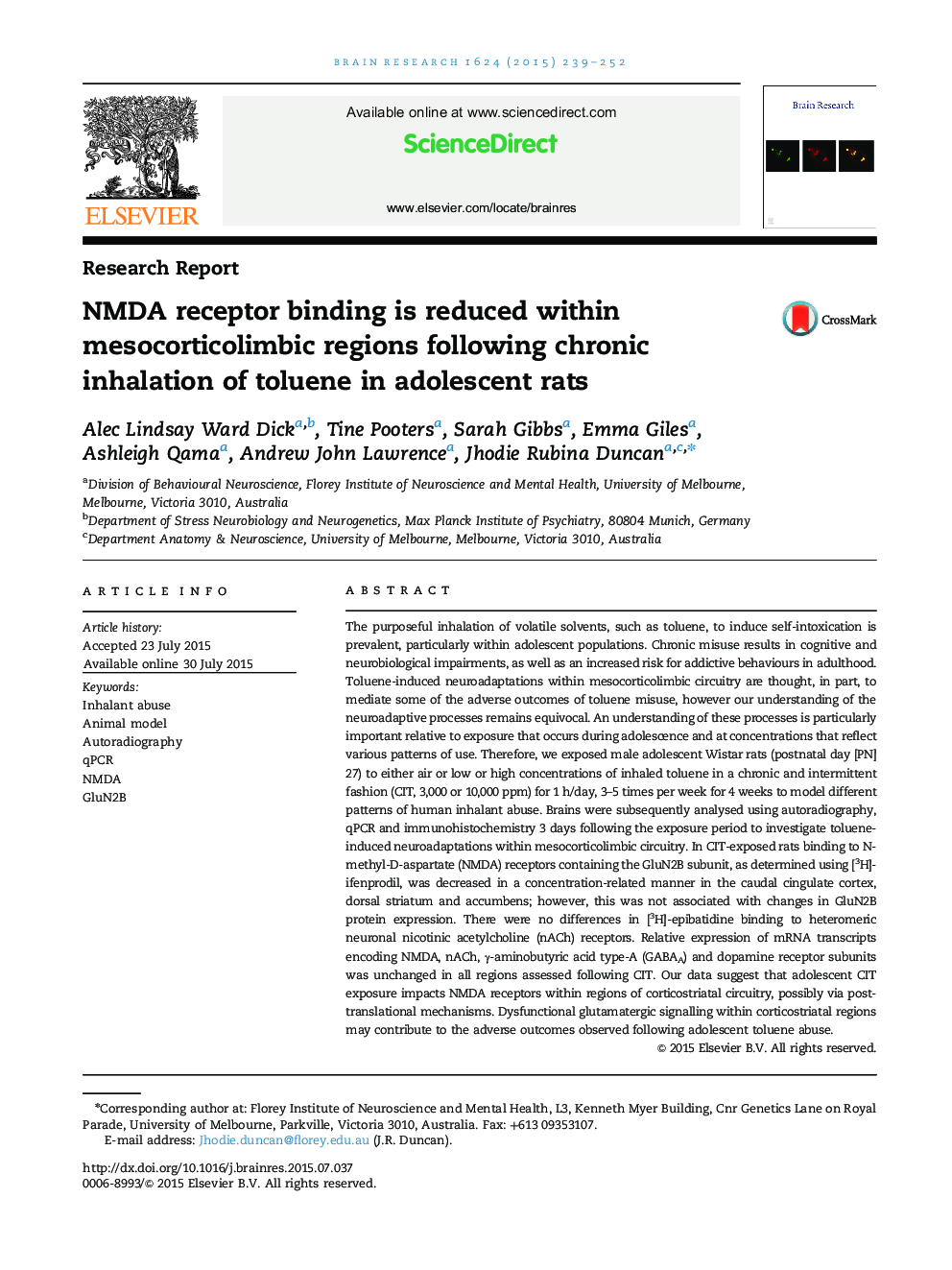| کد مقاله | کد نشریه | سال انتشار | مقاله انگلیسی | نسخه تمام متن |
|---|---|---|---|---|
| 6262884 | 1613815 | 2015 | 14 صفحه PDF | دانلود رایگان |

- Chronic adolescent toluene inhalation concentration-dependently retards weight gain.
- Adolescent exposure to high toluene concentrations decreases GluN2B-NMDAR binding.
- Expression of genes encoding NMDA, nicotinic, GABAA or dopamine receptors unaltered.
- GluN2B-immunoreactivity unaltered following chronic adolescent toluene inhalation.
The purposeful inhalation of volatile solvents, such as toluene, to induce self-intoxication is prevalent, particularly within adolescent populations. Chronic misuse results in cognitive and neurobiological impairments, as well as an increased risk for addictive behaviours in adulthood. Toluene-induced neuroadaptations within mesocorticolimbic circuitry are thought, in part, to mediate some of the adverse outcomes of toluene misuse, however our understanding of the neuroadaptive processes remains equivocal. An understanding of these processes is particularly important relative to exposure that occurs during adolescence and at concentrations that reflect various patterns of use. Therefore, we exposed male adolescent Wistar rats (postnatal day [PN] 27) to either air or low or high concentrations of inhaled toluene in a chronic and intermittent fashion (CIT, 3,000 or 10,000 ppm) for 1 h/day, 3-5 times per week for 4 weeks to model different patterns of human inhalant abuse. Brains were subsequently analysed using autoradiography, qPCR and immunohistochemistry 3 days following the exposure period to investigate toluene-induced neuroadaptations within mesocorticolimbic circuitry. In CIT-exposed rats binding to N-methyl-D-aspartate (NMDA) receptors containing the GluN2B subunit, as determined using [3H]-ifenprodil, was decreased in a concentration-related manner in the caudal cingulate cortex, dorsal striatum and accumbens; however, this was not associated with changes in GluN2B protein expression. There were no differences in [3H]-epibatidine binding to heteromeric neuronal nicotinic acetylcholine (nACh) receptors. Relative expression of mRNA transcripts encoding NMDA, nACh, γ-aminobutyric acid type-A (GABAA) and dopamine receptor subunits was unchanged in all regions assessed following CIT. Our data suggest that adolescent CIT exposure impacts NMDA receptors within regions of corticostriatal circuitry, possibly via post-translational mechanisms. Dysfunctional glutamatergic signalling within corticostriatal regions may contribute to the adverse outcomes observed following adolescent toluene abuse.
Journal: Brain Research - Volume 1624, 22 October 2015, Pages 239-252